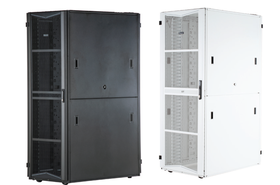Data center infrastructure management (DCIM) is a wide ranging and previously much maligned capability that in recent years has come of age. Customers now have the opportunity to choose from DCIM solutions that encompass a comprehensive suite of hardware, modular software and turnkey services from a range of suppliers, some providing single solutions others offering the full suite of capabilities.
To meet customers’ data requirements and ensure their network delivers the expected performance – high bandwidth, availability, and uninterruptible communications – there needs to be in place real-time end-to-end network monitoring.
Most, if not all, suppliers are driven to improve operational and performance management through a range of functionality, including automated device discovery, visualization, analytics, and actionable intelligence developed to ensure that end users (administrators, engineering, management, and customers) receive real-time data to maintain optimum performance and generate alerts to flag possible future or imminent faults and security risks.
Today’s solutions also offer cloud-native connectivity and must be highly scalable, which has added a further dimension to the resource monitoring previously available. These track infrastructure data providing essential relevant information to authorized users anywhere with an internet connection.
Comprehensive capabilities such as, vendor neutral, agentless auto-discovery of assets ease installation and further reduce set-up time. These capabilities offer customizable reports and dashboards, so engineers, facilities management and customers gain live updates to respond to critical events.
All data center facilities, whether enterprise, colocation, wholesale are built around the four pillars of power, space, cooling, and connectivity. Therefore, modern DCIM solutions need to offer not only, real-time, integrated, and accurate data, but also enhanced data intelligence, that concurrently supports IT Infrastructure, data center operations and facilities management.
The little things count
There are few DCIM or network mapping tool suppliers that are also innovators in the realm of physical infrastructure for data centers. Undertaking the research and development of network infrastructure, including copper and fiber cabling, connectors, cable pathways, enclosure systems, UPS and PDU, guarantees that DCIM developments are based on ground up experience and not simply theory.
Network Mapping is the process of compiling the devices and connections of an IT environment and generating a logical and visual representation of the network, in a format that is easy to understand and follow the interconnections from point-to-point.
For example, a recent development to support network mapping capabilities, and automate the labor intensive and error-prone cable documentation process involved pre-labelled patch cords that, used in conjunction with a handheld Bluetooth RapidID scanner, enables network engineers to easily and more accurately place and trace cables. The data assigned to these connections is uploaded in real time directly into the system.
Accurate physical infrastructure documentation can drastically reduce downtime during an outage. However, documenting physical infrastructure can be extremely time-consuming. Over time, MACs introduce possible failures in updates and therefore network maps can often be out-of-date. Whereas it is estimated that this new process will reduce the time and cost of patch cord documentation by up to 50 percent, while guaranteeing accurate connectivity mapping.
Network mapping is not a one-off activity, the evolving nature of the network must be recorded, and that change reflected in the network plan. If we consider, increasing network densification where physical layer changes are resulting in much higher density cable concentrations, this can mean additionally, thousands of fibre and copper connections that need to be managed across the data center. Each connection is a potential point of failure and therefore it is essential that they are discoverable on the network connectivity map and provide active data.
Speed of change
The speed of technological advancement and the growth of access to multi-venue data connections are making network management more complex and the customer data increasingly interdependent. This pace of changes makes it increasingly important to have access to the tools and systems that allow monitoring and oversight which is relied on for accurate network optimization.
Understanding the data center network infrastructure layout offers greater opportunity to address the challenges of how to migrate to higher data speeds, while retaining control on costs. Exponential bandwidth growth within data centers and the imminent explosion of Edge data center traffic firmly places fiber densification at the forefront of network design, planning and implementation decision making.
This only highlights the requirement for real-time infrastructure mappings to monitor the organizational and customer needs within the data center. As the value of each fiber circuit rises exponentially and networks continue to densify, data center managers who can demonstrate greater scalability, agility, and resilience will gain a business advantage.
Real-time network maps are an indispensable resource especially when conducting performance monitoring. Visual diagrams are very useful in identifying performance choke points and can highlight opportunities for improvement. This is true for internal administrators and customers with access to granular level data now available with these solutions.
Panduit’s DCIM is a cloud-enabled suite of solutions that provides a comprehensive range of instrumented hardware, modularized software, and turnkey services, to provide real-time globally available operational and performance management through automated device discovery, analytics, visualization, and actionable intelligence enabling capacity, event, and change management, for small individual sites up to multi-site global requirements.
More...
-

Sponsored Panduit launches new generation FlexFusion™ cabinets
A new generation cabinet that offers unparalleled customisation possibilities to suit all needs
-

Sponsored Simplifying data center logistics with preconfigured infrastructure
Preconfigured infrastructure solutions proven to streamline the procurement process - and reduce deployment time by up to 80 percent
-

Can the data center industry keep up?
Technology keeps developing, and data centers need to develop with it



